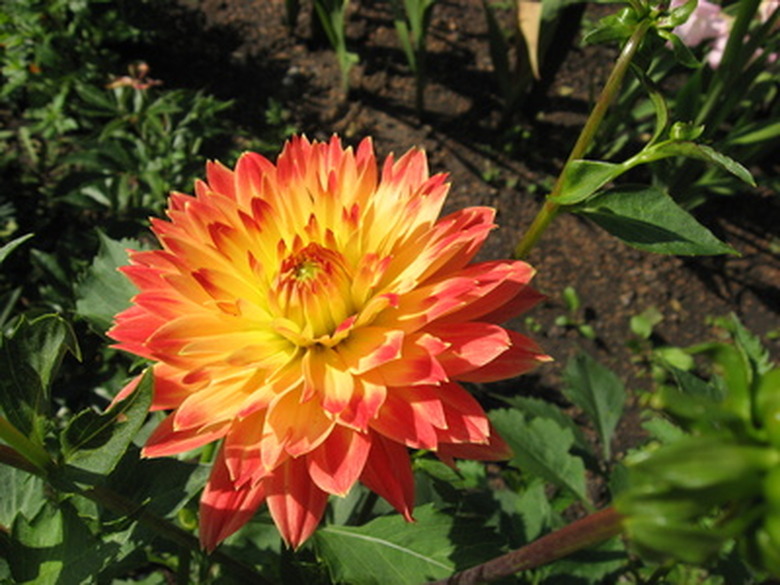How To Winterize Dahlia Tubers
Things Needed
- Garden spade or fork
- Wooden crate
- Peat moss or vermiculite
Dahlias are native to Mexico where they were discovered by Anders Dahl, a Swedish botanist, according to Iowa State University Extension. Although the first dahlias were likely a single row of petals, or florets, with a yellow center, The American Dahlia Society recognizes 20 forms of dahlias, each sporting specific bloom types. Bloom size ranges from the tiny 2-inch pompom to massive 16-inch dinner plate varieties. With 15 official colors, dahlia blooms include traditional white, pink and red as well as bronze. Winterizing dahlias includes lifting and storing the underground tubers.
Step 1
Cut dahlia foliage back to 3 to 4 inches from the ground level once they are killed by frost in the fall. Tag the plants to identify the color and variety.
- Dahlias are native to Mexico where they were discovered by Anders Dahl, a Swedish botanist, according to Iowa State University Extension.
- Cut dahlia foliage back to 3 to 4 inches from the ground level once they are killed by frost in the fall.
Step 2
Dig beneath the dahlia tubers with a spade or garden fork. Dahlia roots spread to a wide area. Use care not to injure roots or damage the tubers when digging.
Step 3
Lift the tubers free of the soil. Shake to remove excess soil. Place dahlia tubers upside down in a shaded area to allow the stem to drain and soil to dry.
Step 4
Remove dried soil by shaking or brushing the tubers with a soft brush. Although tubers can be washed, it is not necessary. If you wash the tubers, allow them to dry before storing.
- Dig beneath the dahlia tubers with a spade or garden fork.
- Place dahlia tubers upside down in a shaded area to allow the stem to drain and soil to dry.
Step 5
Pour a 3- to 4-inch layer of peat moss or vermiculite into the bottom of a wooden crate or storage box. Layer the tubers over the peat moss. Cover with a 3- to 4-inch layer of peat moss.
Step 6
Store in a cool area with temperatures between 40 and 55 F. Check the tubers once a month for signs of shriveling. If tubers begin to shrivel, moisten the peat moss. Avoid overwatering, as too much moisture invites disease.
Step 7
Remove tubers in late spring and plant in a sunny location after the danger of frost has passed in your area.
- Pour a 3- to 4-inch layer of peat moss or vermiculite into the bottom of a wooden crate or storage box.
- Store in a cool area with temperatures between 40 and 55 F. Check the tubers once a month for signs of shriveling.
Tip
Although typically referred to as dahlia bulbs, the storage organ of dahlias is actually a fleshy or tuberous root, according to the University of Minnesota Extension.
